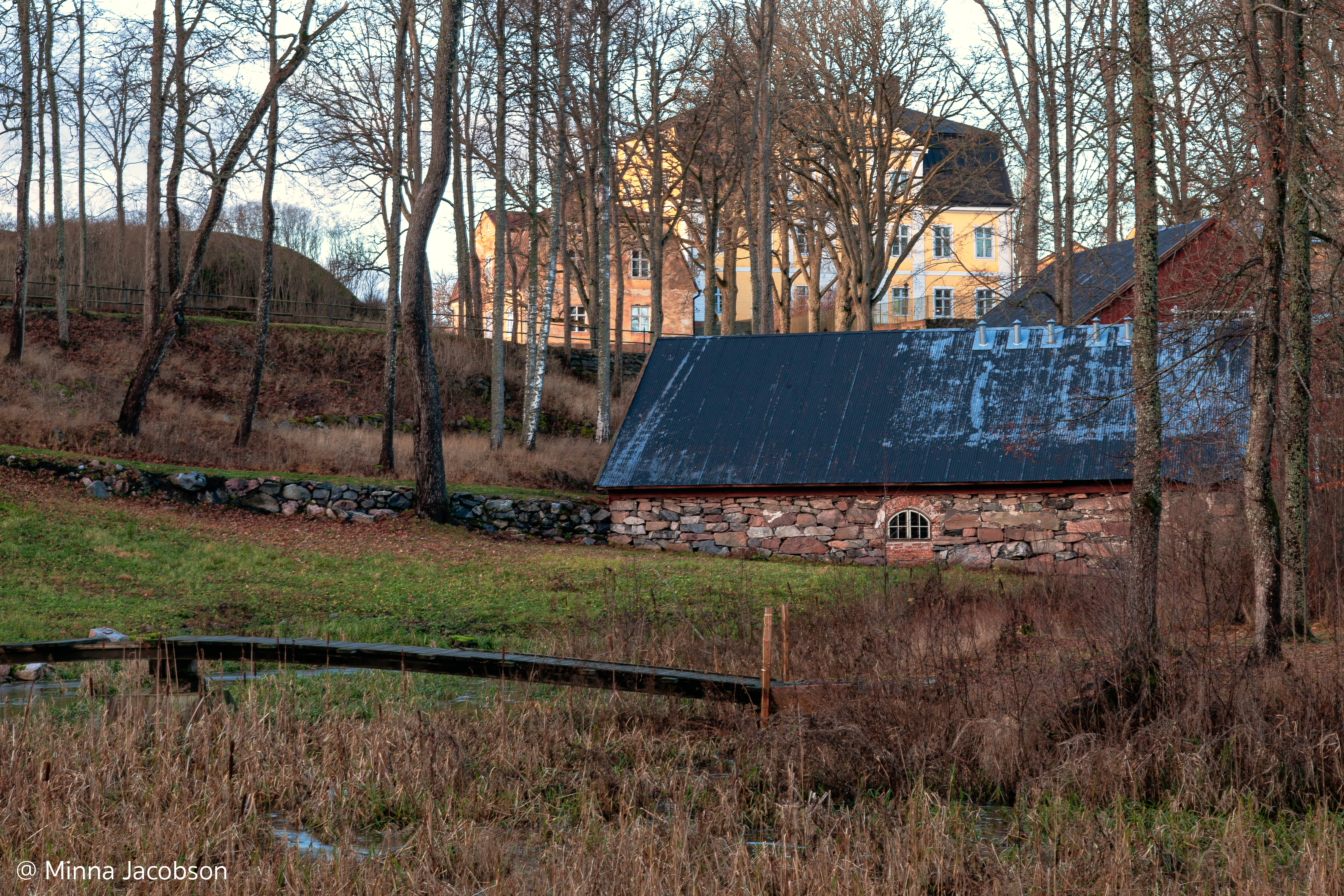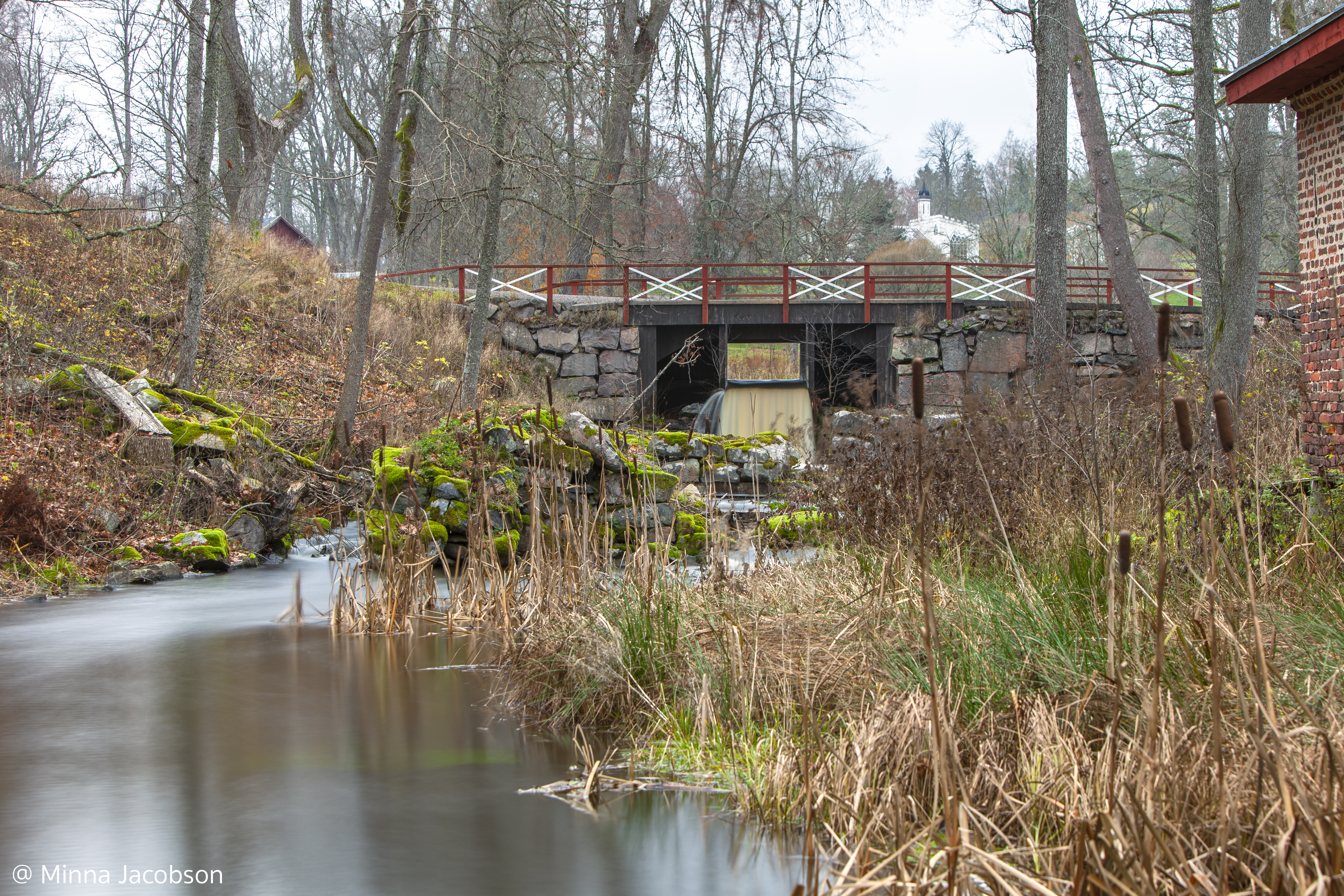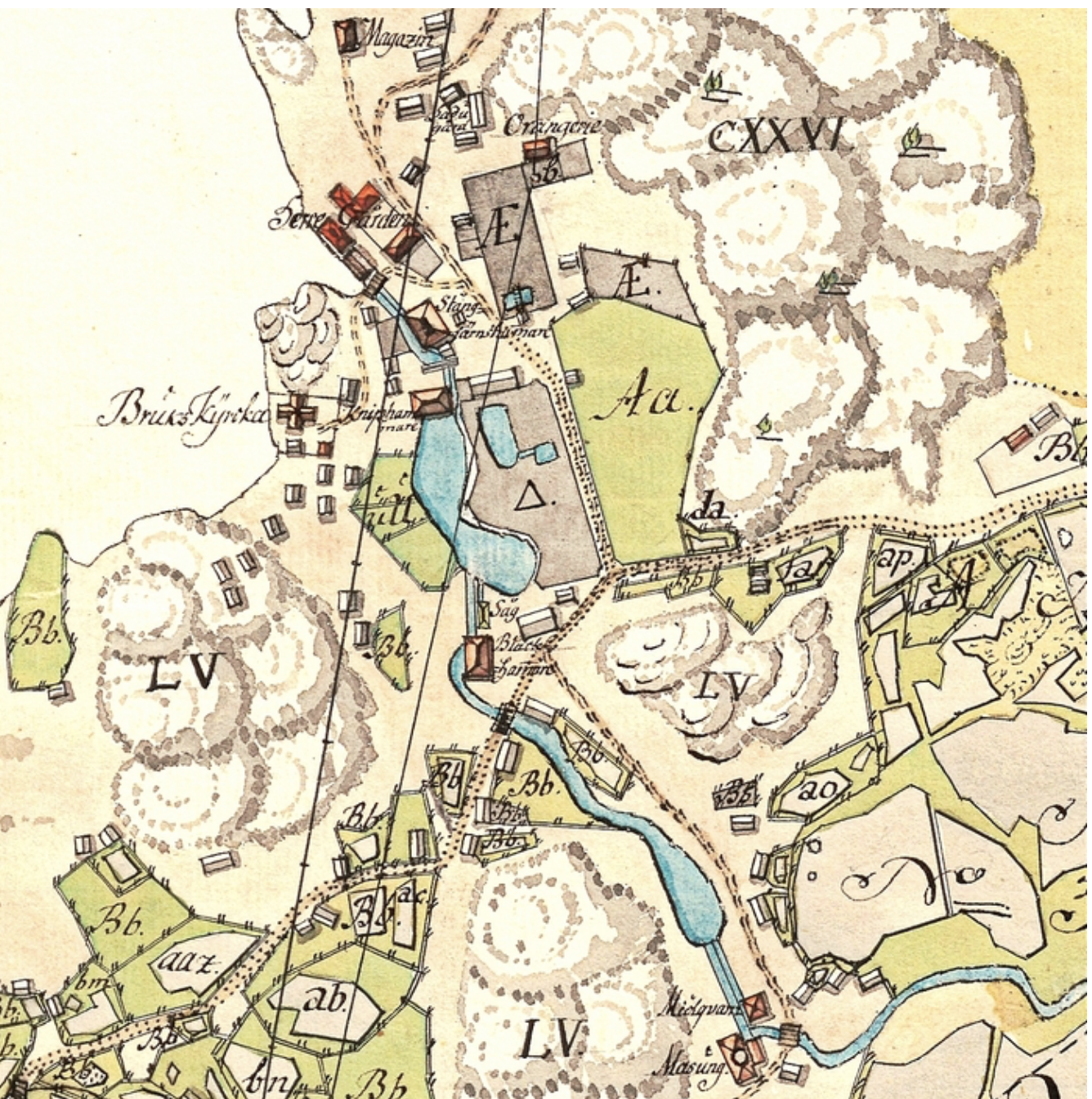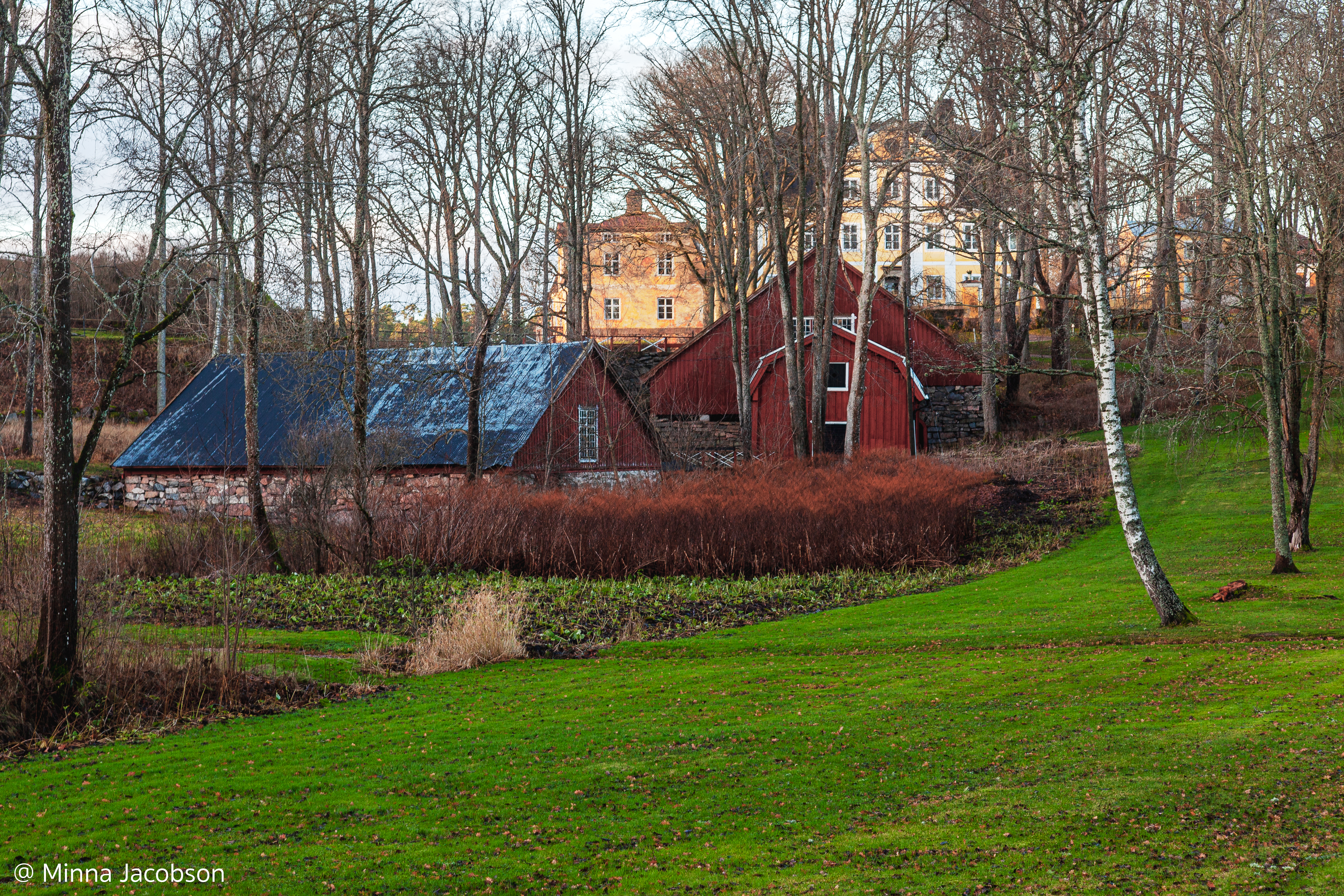Fagervik ironworks – second post in my series of Finnish rapids. Besides beautiful rapids Fagervik has interesting history and it has played important role in the Finnish industrialization.
Fagervik is located in Inkoo
Fagervik is located in Inkoo by the rapids that flows from Lake Bruksträsket (Ruukkijärvi) to the Baltic Sea. Fagervik ironworks was founded in 1646, when Carl Billsten, a Stockholm merchant, had permission to build a blast furnace along the Inkoo River.



Like other ironworks in the Southwest Finland, Fagervik was part of the Swedish iron industry, which in the 17th century had a leading position in Europe.
Fagervik is Finlands most cohesive and representative pre-industrial ironworks
Fagervik is Finlands most cohesive and representative pre-industrial ironworks. The building stock of the ironworks area includes exceptionally representative sites: iron industry buildings, Fagervik manor, the private church and cemetery area, a French garden, an English-style landscape park and extensive nature park, as well as old blacksmiths cottages.



Fagervik ironworks has a long history in a strategically important place as Kings road from Turku Castle to Vyborg Castle passes through the ironworks. Honored guests including King Gustav III of Sweden and Emperor Alexander I of Russia have spent the night in Fagervik (link to a document showing f.e. the Kings room in Fagervik manor).
Finlands first potatoes were grown in Fagervik
In the mid 1720’s the blacksmiths working on the factory brought the potatoes from Germany to Finland and so started potatoes way to Finns dining tables.




Besides potatoes in Fagervik has been growing lemons, grapes, orchids and mulberry trees. Nowadays the Fagervik estate is modern production unit within agriculture and forestry. There is a museum and cafe, which are open during summer. You can find more info HERE.
Thank you for visiting my blog! I hope you enjoyed reading Fagervik post 😊

It’s wonderful to know the history of a place. On the east coast here, where I am, history starts with the arrival of Europeans but really, of course it goes much further back but our knowledge of Native Americans is sadly lacking. Cambridge (NY) where I live dates to 1761 which is fairly old for the USA. Some famous battles were fought in these parts. But I prefer to look at natural things.
LikeLiked by 1 person
Thank you for your kind comment! History is interesting and especially I am fond of the ironworks. In Finland we have quite many ironworks established in 17th century.
LikeLike
I’ve yet to properly learn how to master long exposure water photos. Yours are lovely! I think I need a sturdier tripod! Amazing photos 😊
LikeLiked by 1 person
Thank you Rosie! Yes you need sturdy tripod and ND filters. I use ND64 filter if it is shady day. In sunny day I use ND1000 filter. Happy photographing 👍😊
LikeLike
Spectacular photos! I would love to stay in one of the cottages. 🙂
LikeLiked by 1 person
Thank you MagickMermaid! I would live to stay there as well 🙂
LikeLiked by 1 person
A very interesting post and your photos are wonderful. 🙂
LikeLiked by 1 person
Thank you Lynette 😊
LikeLiked by 1 person
Hello Minna.
Thank you sharing your wonderful photos and from history lesson! We have not been there, but I will remember the place and it for the future visit.
Have a great day!
LikeLiked by 1 person
Thank you Matti for your comment! Fagervik is appr. 70 km from Helsinki and worth of visit. Have a great day too and take care!
LikeLiked by 1 person
Minna, thank you very much for sharing the history of this place along with your wonderful photographs!!
Just out of curiosity, what is private church? Restricted only for one privileged family?
LikeLiked by 1 person
Hello Deeksha and thank you kindly and thank you for your question. From 1648 to 1870 Fagervik formed its own parish. The church served a social as well as a religious function; a meeting place for the whole community. The church is owned by the Fagervik manor and nowadays it is not open for worship.
LikeLiked by 1 person
Minna, thank you so much 😘
LikeLiked by 1 person
A both beautiful and interesting documentation of the Swedish Iron Age in Finland. It would be fun to know what the inside looks like, if some houses have been restored. But they may not have been available when you visited the place. Kings in all glory, but here probably many have worked hard for their livelihood.
LikeLiked by 1 person
Thank you Hans! Yes, you are right regarding the hard-working blacksmiths! I watched a document of Fagervik (I have a link in my post to a Finnish document where you can see f.e. the interior of the manor) and learned that blacksmiths worked in two shifts and were living with their families only during weekends or may be only Sundays. As the manor is privately-owned there is no access to the buildings. Although the factory buildings are part of the museum and they are open during summer, so next summer I will visit Fagervik with my camera again 🙂
LikeLike
Perfekt 👍
LikeLiked by 1 person
Very interesting post Minna, and I love love love your photos of the rapids! I’m going to have to learn how to take photos like that one of these days. 😀
LikeLiked by 1 person
Thank you Sue, I am glad that you liked my rapids photos! I love to photograph water and especially rapids. Long exposure photographing is not difficult: you need some ND filters, sturdy tripod and a camera that you can adjust manually.
LikeLiked by 1 person
What a lovely area. It looks like the water is moving really fast. I love the church and all the other quaint red buildings!
LikeLiked by 1 person
Denise it is so lovely area! Next summer I will visit the museum and hopefully get some pictures of the old factories.
LikeLike